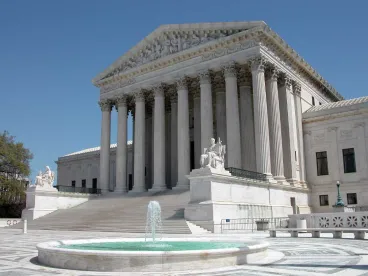On June 16, 2023, the Supreme Court in United States ex rel. Polanksy v. Executive Health Resources, affirmed the Third Circuit’s deferential standard regarding the government’s ability to dismiss False Claims Act (FCA) whistleblower cases being litigated by qui tam relators. Notwithstanding this deferential standard, the Court rejected the government’s position that it has essentially “unfettered discretion” to dismiss an action as endorsed by the D.C. Circuit in Swift v. United States. As a result, relators can challenge the government’s decision to dismiss their cases and the government must make a showing, consistent with the default standard for voluntary dismissal under the federal rules, for the dismissal to be granted. But as the Court noted, the government is afforded “substantial deference” when moving to dismiss a qui tam action, and if the government explains why the suit will not vindicate the government’s interest, the motion will pass muster “in all but the most exceptional cases.”
Relators and the FCA
Since the Civil War, the FCA has allowed private parties — relators — to bring lawsuits in the name of the government to recover for fraudulent or false claims submitted to the government. Procedurally, the FCA enables both the government and the relator to litigate the case separately, or together, and share recovery for the injury to the government. Because the government is the true party in interest, the FCA favors the government with procedural tools to control the litigation. Those tools come into play as early as when the case is filed. The FCA requires relators to initially file the complaint under seal, after which the government has 60 days to decide whether to take over the case by intervening. In separate provisions, the act also gives the government the opportunity to intervene later in the suit upon a showing of good cause, and it gives the government the authority to dismiss the suit over the relator’s objection.
Polansky
In Polansky, the relator challenged the government’s discretion to dismiss the suit despite the years of legal work involving multiple large law firms invested by the relator. The Court addressed two issues: (1) must the government first intervene in the suit before seeking dismissal; and (2) what standard applies to the government’s attempt to dismiss. Both issues had been the subject of varying approaches by different courts of appeals. In Polansky, the Third Circuit previously held that the government was required to intervene before seeking dismissal and, once it had done so, the default standard for evaluating voluntary motions to dismiss under Federal Rule of Civil Procedure 41 applied.
Supreme Court Affirms the Third Circuit’s Approach
In an 8-1 majority opinion authored by Justice Elena Kagan,the Supreme Court affirmed the Third Circuit and followed the same approach.
On the first question, the Court found that the government must intervene in the case before seeking to dismiss it. In cases where the government initially declines to pursue an action, the FCA still allows the government to intervene at any later time upon a showing of “good cause.” As provided by the FCA, the government must establish “good cause” for the intervention. Here, because the relator in Polansky did not challenge the government’s good cause showing to intervene, the Supreme Court declined to opine on the requirements of such a showing, but took note of the Third Circuit’s explanation that “showing ‘good cause’ is neither a burdensome nor unfamiliar obligation,” but instead “a uniquely flexible and capacious concept, meaning simply a legally sufficient reason.”
On the second question regarding the standard that applies once the government moves to dismiss, the Court again adopted the Third Circuit’s approach. In doing so, the Court rejected the government’s argument for an “unfettered right” standard similar to that adopted by the D.C. Circuit in Swift. Such a standard, grounded on the principal that the real party in interest is the government, would effectively prevent relator challenges to the government’s decision and oversight by the courts. The Court instead held that the standards of the Rule 41 “proper terms” analysis applies. This analysis focuses on the parties’ interests and mainly addresses whether the party’s commitment of time and money militates against dismissal. In a standard case, this normally applies to the defendant’s commitment of time and resources, but in a qui tam the issue includes the relator’s commitment as well.
Applying that analysis, the Court found that the government had easily met the standard by enumerating the significant costs of future discovery in the suit, as well as the reasons why the government believed that the suit had little chance of success. Accordingly, the Court concluded that “[a]bsent some extraordinary circumstance, that sort of showing is all that is needed for the Government to prevail on a (2)(A) motion to dismiss.”
A Notable Dissent and Concurrence
Justice Clarence Thomas was the lone dissenter to the Court’s opinion. In his dissent, Thomas contended that the FCA does provide the government with the right to dismiss a qui tam after declining to intervene. More notably, Thomas further argued that qui tam lawsuits may be inconsistent with the executive powers enumerated in Article II of the U.S. Constitution. On that latter point, Justices Brett Kavanaugh and Amy Coney Barrett joined Thomas in a short concurrence, inviting the Court to consider the Article II implications of qui tam suits in the appropriate case.




 />i
/>i
